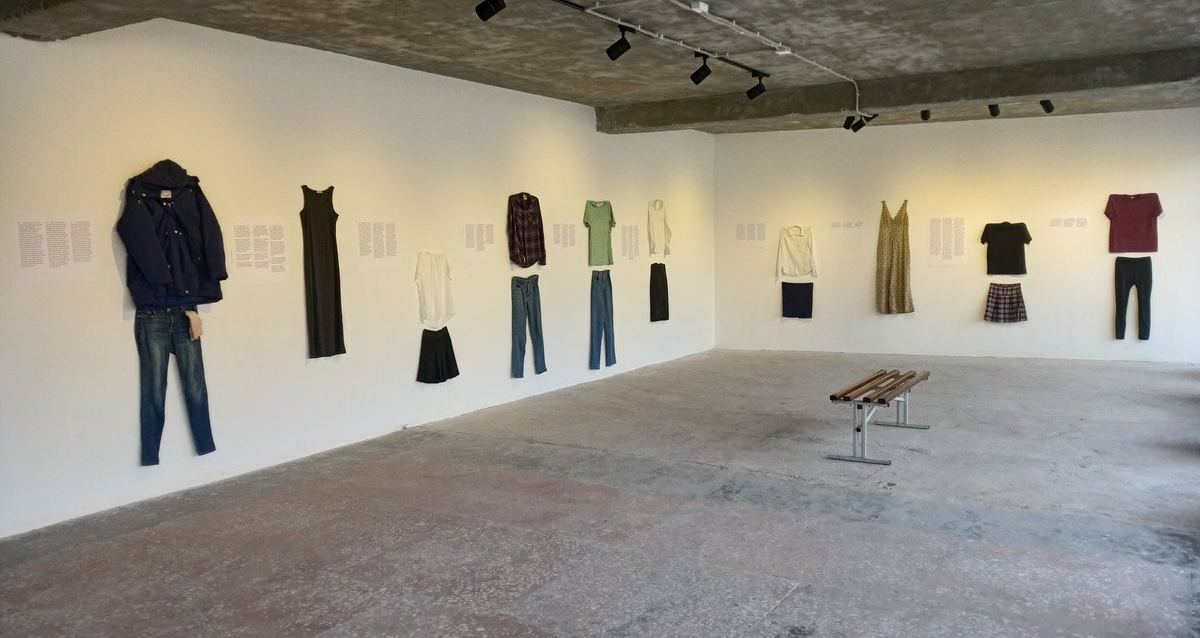After 10 years of bringing worldwide attention to sexual assault, ‘What Were You Wearing?’ art installation returns to KU in April

LAWRENCE — For a decade, the “What Were You Wearing?” survivor art installation has brought attention to sexual violence and given a voice to survivors. The exhibit returns to the University of Kansas campus in Lawrence from April 2 to 18 during Sexual Assault Awareness Month.
First exhibited at the University of Arkansas in April 2014, the project was conceived by leaders of that university’s sexual assault advocacy and resources center, Mary Wyandt-Hiebert and Jen Brockman.

Brockman — who has led KU’s Sexual Assault Prevention & Education Center since 2016 — and her colleague were inspired by the Mary Simmerling poem “What I was Wearing.” The pair interviewed survivors about what they were wearing when they experienced sexual violence. Using donated thrift store items, they recreate the outfits and put them on display with survivors’ quotes. The outfits on display have included athletics uniforms and child-sized dresses like those survivors wore when they experienced the violence.
This framework has been used for installations by more than 300 organizations across six continents. Since 2018, many of the organizations have hosted the installation repeatedly in several locations and communities. KU’s installation next month will include touch screens with which visitors can see locations where the installation has been hosted.
Members of the media and the public are invited to an opening reception from 4 to 6 p.m. April 4 in the Kansas Union Gallery, where Brockman will be available to speak with reporters.
In the 10 years since Brockman and Wyandt-Hiebert sowed the seeds for the installation, the are seeing the project “blooming.” Notably, in 2022 the “What Were You Wearing: Fashion Exhibit” by RISE was done in collaboration with the United Nations.
“To be the inspiration for so many different projects is really humbling,” Brockman said.
One of the decisions the creators are most proud of is keeping the installation as free, open-source material.
“No one should profit off the stories donated by survivors, and keeping the installation as open source allows for a community response to this shared issue,” Brockman said.
Over the past decade, social media platforms like Instagram and TikTok have added “depth and movement” to how the installation is experienced in a virtual space.
“It has allowed for access to the conversation to a much larger audience, with survivors around the world utilizing those platforms to answer the universal question “What were you wearing?” Brockman said.